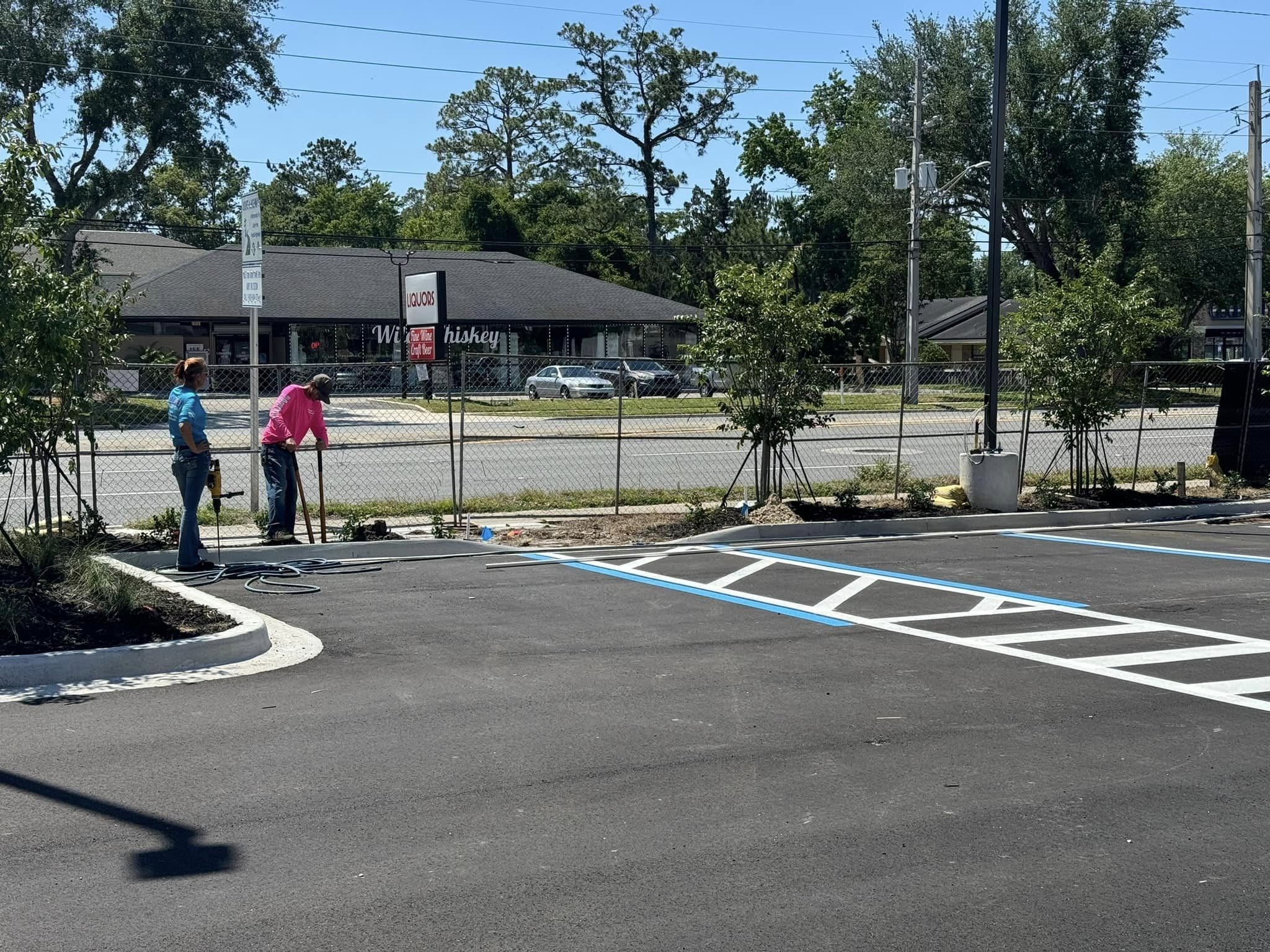
Maintaining high-quality asphalt surfaces is crucial for both safety and aesthetics, whether it’s for driveways, parking lots, or roads. Asphalt repair and paving services are essential in ensuring these surfaces remain functional and visually appealing over time. Two key components in this realm are asphalt repair and paving services and thermoplastic pavement marking. Keep reading to know about these essential services, their benefits, and how they contribute to the longevity and safety of our roadways.
Understanding Asphalt Repair and Paving Services
Asphalt is one of the most commonly used materials for road construction due to its durability, cost-effectiveness, and ease of maintenance. However, over time, asphalt surfaces can deteriorate due to factors such as weather, heavy traffic, and improper installation. That’s when asphalt repair and paving services enter the picture.
Begin With The Basics, What is Asphalt Repair?
Asphalt repair stands for fixing damaged areas on asphalt surfaces to restore their integrity and prolong their lifespan. Common types of asphalt repair include:
Pothole Repair: Potholes are depressions in the pavement caused by the expansion and contraction of water beneath the asphalt surface. Repairing potholes involves cleaning the area, applying a tack coat, and filling the hole with hot or cold asphalt mix.
Crack Sealing: Cracks in asphalt can allow water to penetrate the surface, leading to further damage. Crack sealing involves cleaning out the cracks and filling them with a rubberized sealant to prevent water infiltration.
Overlay: An overlay is a layer of new asphalt applied over an existing pavement surface. This method is used to restore the appearance and functionality of the road without the need for complete reconstruction.
Full-Depth Reclamation: This process involves pulverizing the existing asphalt and base materials, mixing them with new materials, and then compacting them to create a new, stable base for fresh asphalt paving.
What is Asphalt Paving?
Asphalt paving involves the installation of new asphalt surfaces for roads, parking lots, driveways, and other areas. The paving process typically includes the following steps:
Site Preparation: The area is cleared of any debris, vegetation, or old pavement. The subgrade is then prepared and compacted to create a stable base.
Base Layer: A layer of aggregate material is spread and compacted to form the foundation for the asphalt pavement.
Asphalt Layer: Hot mix asphalt is applied in layers and compacted using heavy rollers. The surface is then smoothed to ensure an even finish.
Finishing: Once the asphalt has cooled and hardened, the surface is inspected for any imperfections. Line striping and pavement markings are then applied.
Benefits of Asphalt Repair and Paving Services
Durability: Asphalt surfaces are known for their strength and ability to withstand heavy traffic loads. Proper maintenance through repair and paving services can extend their lifespan significantly.
Cost-Effectiveness: Asphalt is a cost-effective material compared to other paving options. Its repair and maintenance are also relatively affordable, making it a popular choice for many municipalities and businesses.
Quick Installation and Repair: Asphalt can be laid and repaired quickly, minimizing disruptions to traffic and daily activities. This quick turnaround is especially beneficial for high-traffic areas.
Smooth and Safe Surface: Properly paved asphalt surfaces provide a smooth and even driving experience, reducing the risk of accidents caused by uneven pavement.
Recyclability: Old asphalt can be reclaimed and reused in new paving projects, reducing waste and conserving resources.
Introduction to Thermoplastic Pavement Marking
It is a widely used method for applying road markings and symbols. To ensure road safety, this efficient technique of thermoplastic pavement marking involves using a thermoplastic material that becomes liquid when heated and hardens upon cooling, creating durable and highly visible markings.
Benefits of Thermoplastic Pavement Marking
Durability: Thermoplastic pavement marking typically lasts longer than traditional paint markings.
Visibility: The material can be made highly reflective, ensuring that markings are visible both during the day and at night. This enhances road safety by providing clear guidance to drivers.
Quick Application: Thermoplastic markings can be applied quickly, reducing the time needed for road closures and minimizing disruptions to traffic.
Versatility: Thermoplastic can be used for a wide range of markings, from simple lines to complex symbols and legends. This versatility makes it suitable for various road marking needs.
Cost-Effective: Although the initial cost of thermoplastic markings may be higher than traditional paint, their durability and longevity make them a cost-effective choice in the long run.
The Role of Asphalt Repair and Thermoplastic Marking in Road Safety
The combination of asphalt repair and paving services with thermoplastic pavement marking plays a crucial role in ensuring road safety and efficiency.
Preventing Accidents: Well-maintained asphalt surfaces reduce the risk of accidents caused by potholes, cracks, and uneven pavement. Clear and durable pavement markings guide drivers, cyclists, and pedestrians, reducing the likelihood of collisions.
Enhancing Visibility: Reflective thermoplastic markings improve visibility in low-light conditions, such as nighttime or adverse weather, making it easier for drivers to navigate safely.
Guiding Traffic: Proper pavement markings help manage traffic flow, indicate lane changes, and provide directional guidance. This is essential for reducing congestion and preventing accidents at intersections and busy roadways.
Pedestrian Safety: Thermoplastic markings for crosswalks and pedestrian zones enhance the safety of pedestrians by clearly delineating safe crossing areas.
Compliance with Regulations: Adhering to road marking standards and regulations ensures that roadways meet legal requirements for safety and accessibility.
Conclusion
Asphalt repair and paving services, coupled with thermoplastic pavement marking, are essential components of modern road infrastructure. They ensure the safety, functionality, and aesthetics of our roadways, contributing to smoother travel and reduced accident risks. By investing in these services and choosing the right providers, we can maintain and enhance our road networks, ensuring they serve our communities effectively for years to come.